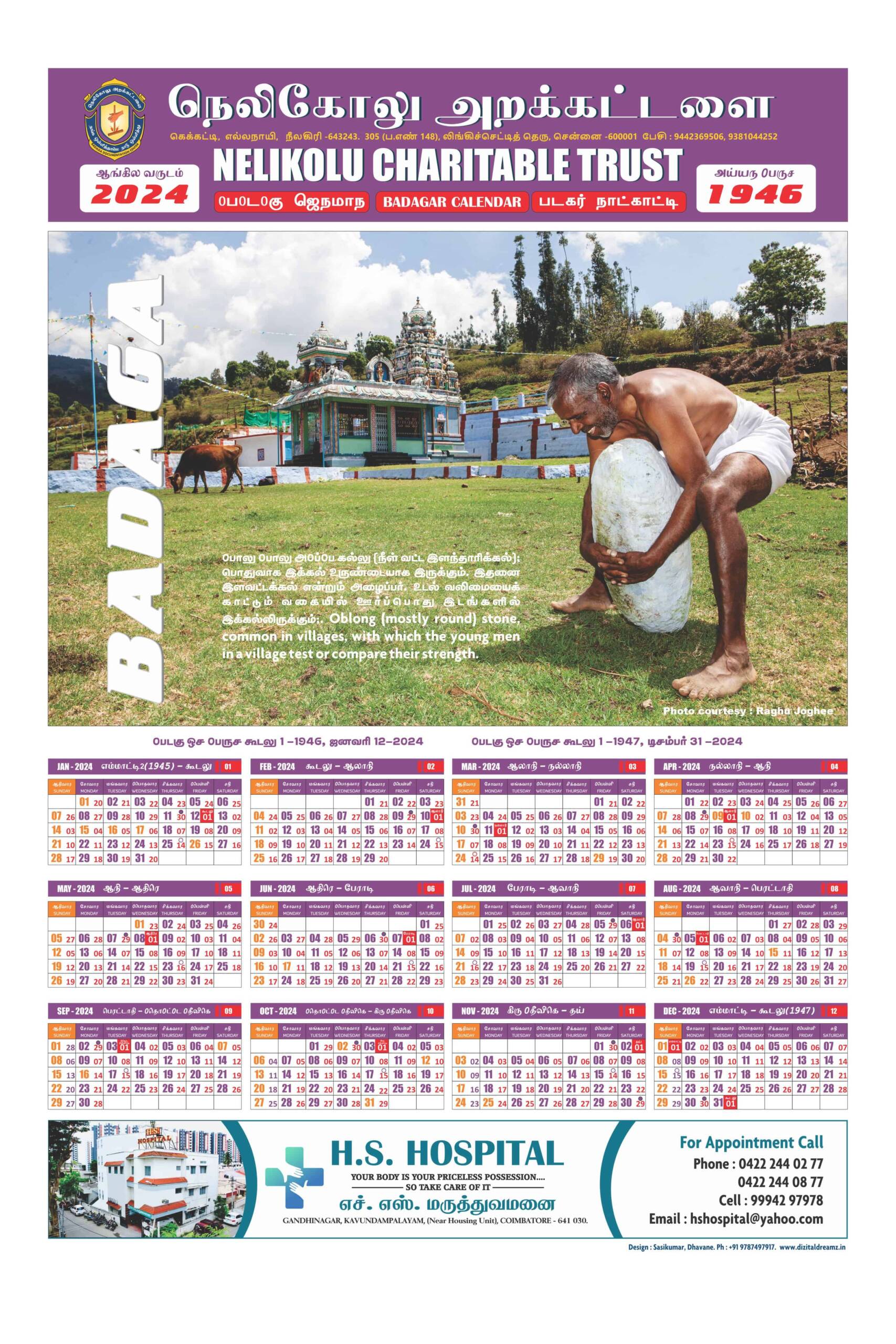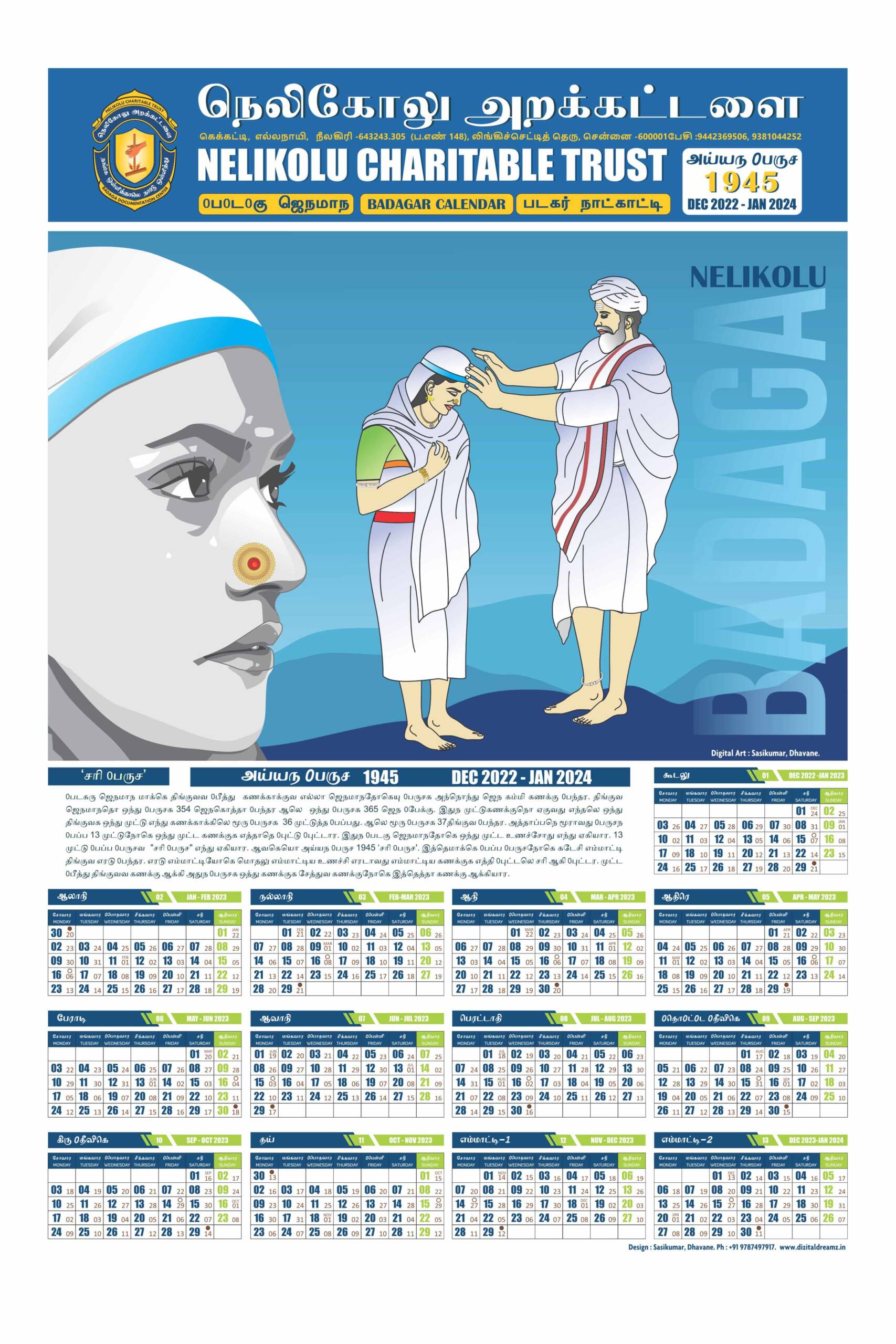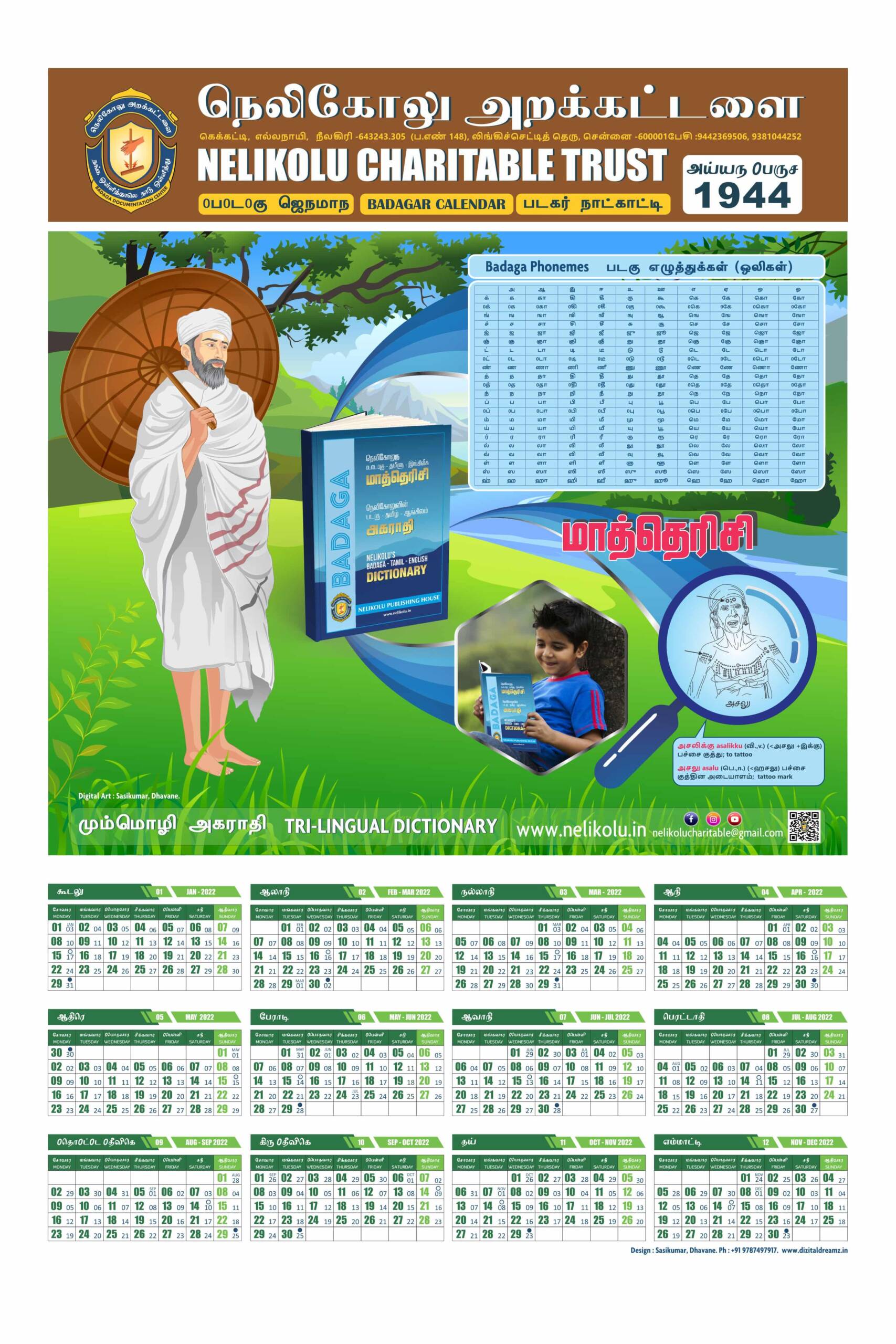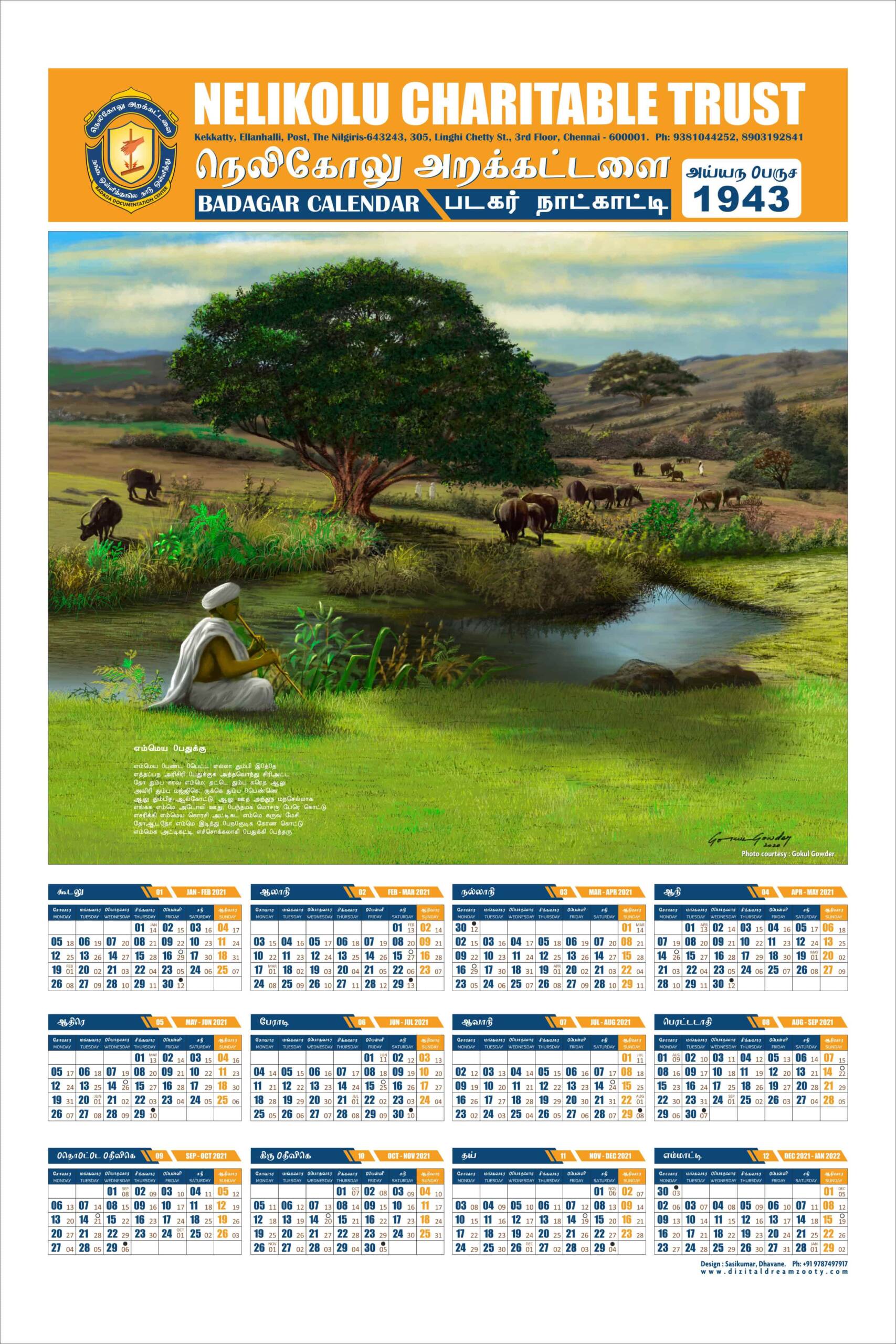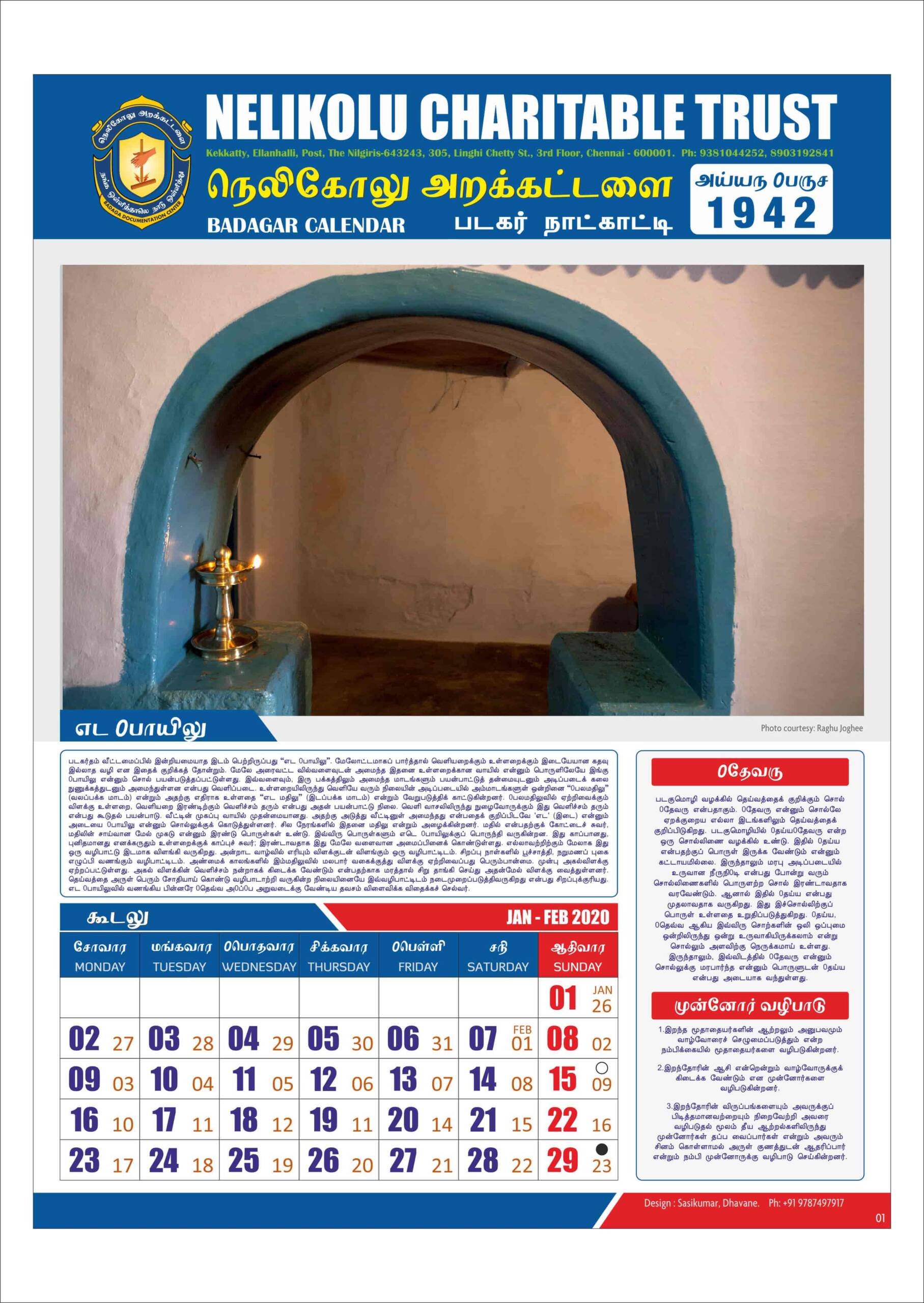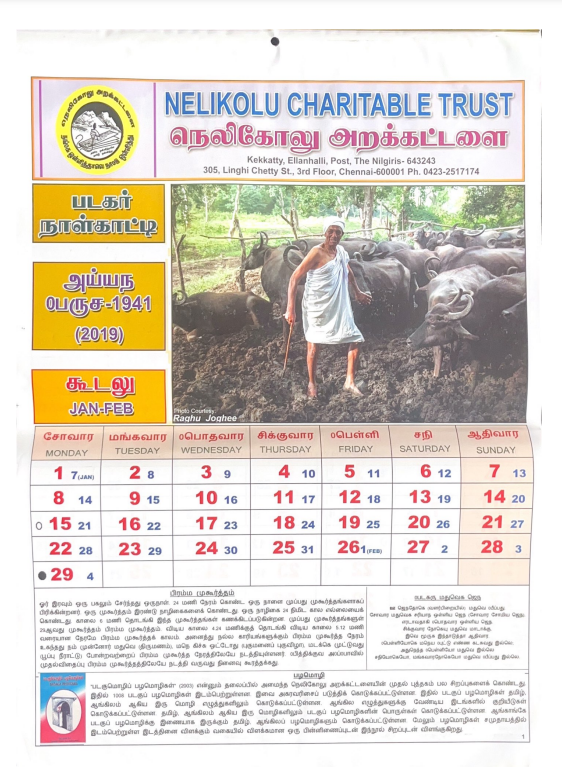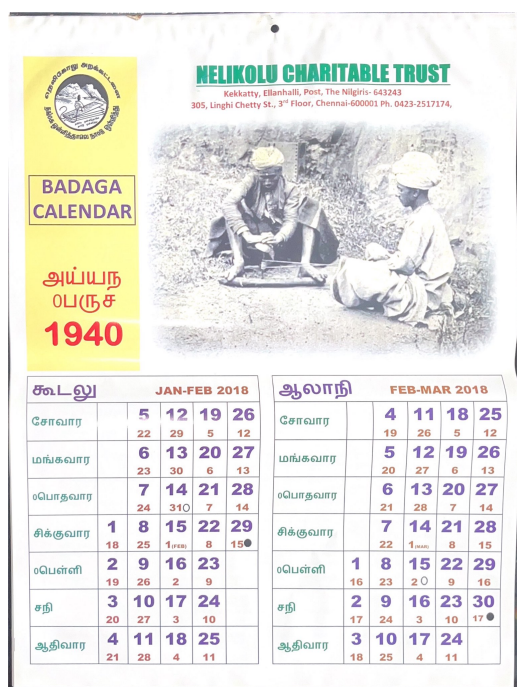Badagas can boast with their own time-reckoning calendar. Once they followed their own full-fledged time-reckoning system and they practiced it even for their day to day life. But, it is to our dismay that at present most of the Badagas have only a little knowledge about that. Due to the easy accessibility of universally adopted Gregorian calendar and the arrival of panjaangam calendar at local market Badagas gradually disused their calendar system. However, it is to our surprise that still few have not forgotten the names of twelve months of the Badaga calendar. 1. kuudalu, 2. haalaani, 3. nallaani, 4. aani, 5. aadire, 6. peeraadi, 7. aavaani, 8. perattaadi, 9. dodda diivige, 10. kiru diivige, 11. tay, and 12. hemmaatti are the twelve Badaga months. The basic unit of computation in a calendar is the day. Badagas used to dawn to dawn reckoning.
The Badaga month is based on lunar calendar. The Badaga calendar month begins on the day after a muttu (new moon) and therefore muttu is the last day of the lunar month. So, Badaga year too begins on the day after a muttu (of course on a particular muttu). Pancha Dravida (the five division of the Dravidian race viz. Tamil, Telugu, Kannada, Marati and Gujarati; southern states of India) have month from the day after a muttu to the next muttu. The day after muttu is first day of 29/30 days of a month.Except the sakkalaati (oblation to evil spirit) festival all Badaga festivals fall on immediate after the new moon day. sakkalaati festival falls prior to muttu on Saturday which is not considered as an auspicious day. The new moon is quite significant in Badaga calendar. Badagas generally wait for new moon to start new ventures and they consider the work starts on new moon or on waxing period of moon will yield good result. uujenaa (Tamil valarpirai, shukla paksha) is called as the bright half of the moon changes from no moon to full moon while aujena or teevare (Tamil teeypirai, Krishna paksha) it changes from full moon to new moon. In Badaga culture and beliefs muttu is considered a time of great power. They consider muttu is important for fixing the day for recovery or death to an ailing person. Even, they predict that a continuous rain ends after new moon the course of rain ends with that. On contrary, they predict that the continuous rain that ends prior to the new moon the course of the rain exists and there will be rain within a short period.For the Badagas the period between the day after one new moon and the next new moon is a month. tinguva is the Badaga name for both moon and month and it expresses lunar month unequivocally, is roughly thirty days (Actually it consists 29. 5306 days). So, it is apparent that Badaga new year too begins on the day after a new moon day. It falls on different day every year because Badaga calendar is a lunisolar calendar. Every alternative year consists of thirteen new moon days . So one new moon day should be discarded without counting during every alternative year.The day after on which new moon day Badaga year begins? And which new moon day is be discarded without counting during alternative year? If we answer to these questions the doubt persists on Badaga calendar will disappear once for all.
“Exact time-reckoning is not a vital requirement for pastoral nomads. On the other hand, the correlation of lunar and solar time-reckoning was a necessary component of the urbanization process of the early agriculture societies. The solar year is roughly 365 days and lunar months make roughly 354 days, so a purely lunar time-reckoning is out of step with the season, which is determined by the yearly course of the sun. A lunisolar calendar was an essential instrument in administration and religion; it enabled the co-ordination of trade and agricultural activities (forecasting of seasonal yearly monsoons and floods) and the celebration of seasonal feasts at the proper time.”(Asko Parpolo). Badagas were pastorals comparatively for a longer period and they undertook the agriculture profession later on. Hence their time- reckoning consists of lunar months and solar year.
Badagas consider the bright half of the lunar month as auspicious and they prefer these days for religious activities. “muuru jena here or katti here” is considered as one of the most auspicious day in the Badaga religious beliefs. It falls on the third day after new moon. Considered as a holy day, it is the ideal day for conducting puujaas and celebrating festivals. It is believed that whatever new venture one makes on this day (or on the waxing moon period days) will be tremendously successful. Badagas prefer marriage and other ceremonies on these days and they see even the milking the first time of a buffalo or cow on these days.
Badagas follow the south Indian lunisolar calendar. yugaadi or ugaadi festival marks the new year day for the south Indian people who follow the south Indian lunisolar calendar. It begins on the first new moon after the sun crosses equator from south to north on spring equinox*, i.e. after March 21. meelsiime Badagas celebrate honneeru or dodda habba (first ploughing) festival of a year on yugaadi day. With this one can assume that the first ploughing festival marks the new year day for the Badaga people too. On yugaadi new moon day the Badaga month aani begins. However most of the Badagas consider kuudalu is the first month of a year. As yugaadi falls on the day after new moon day, it is easy to find the new moon on which kuudalu month begins. We have to go back three new moon days from the yugaadi new moon.
The yugaadi time- reckoning itself unaccounting a new moon during alternative years. So when we follow the yugaadi era the unaccounting an extra new moon day during alternative years goes along with it. For Badagas, the alternative year which bears thirteen new moon days is saribarusa. saribarusa goes along with an intercalary month i.e. an extra month ( or days) inserted in particular year. The intercalary month proceeds the month that bears the same name. It is said that this calendar (yugaadi) reckons dates based on the Shalivahana era, which begins its count from the supposed date of the founding of the empire by the legendary hero Shalivahana (78 A.D.)
* equinox = time or date at which sun crosses equator and day and night are equal (March 21, September 23). March 21st is spring equinox day .
In India a full day is from one sunrise to next sunrise. A dinamaan (daytime) is from sunrise to sunset. A raatrikaal (nighttime) is from sunset to next sunrise.

